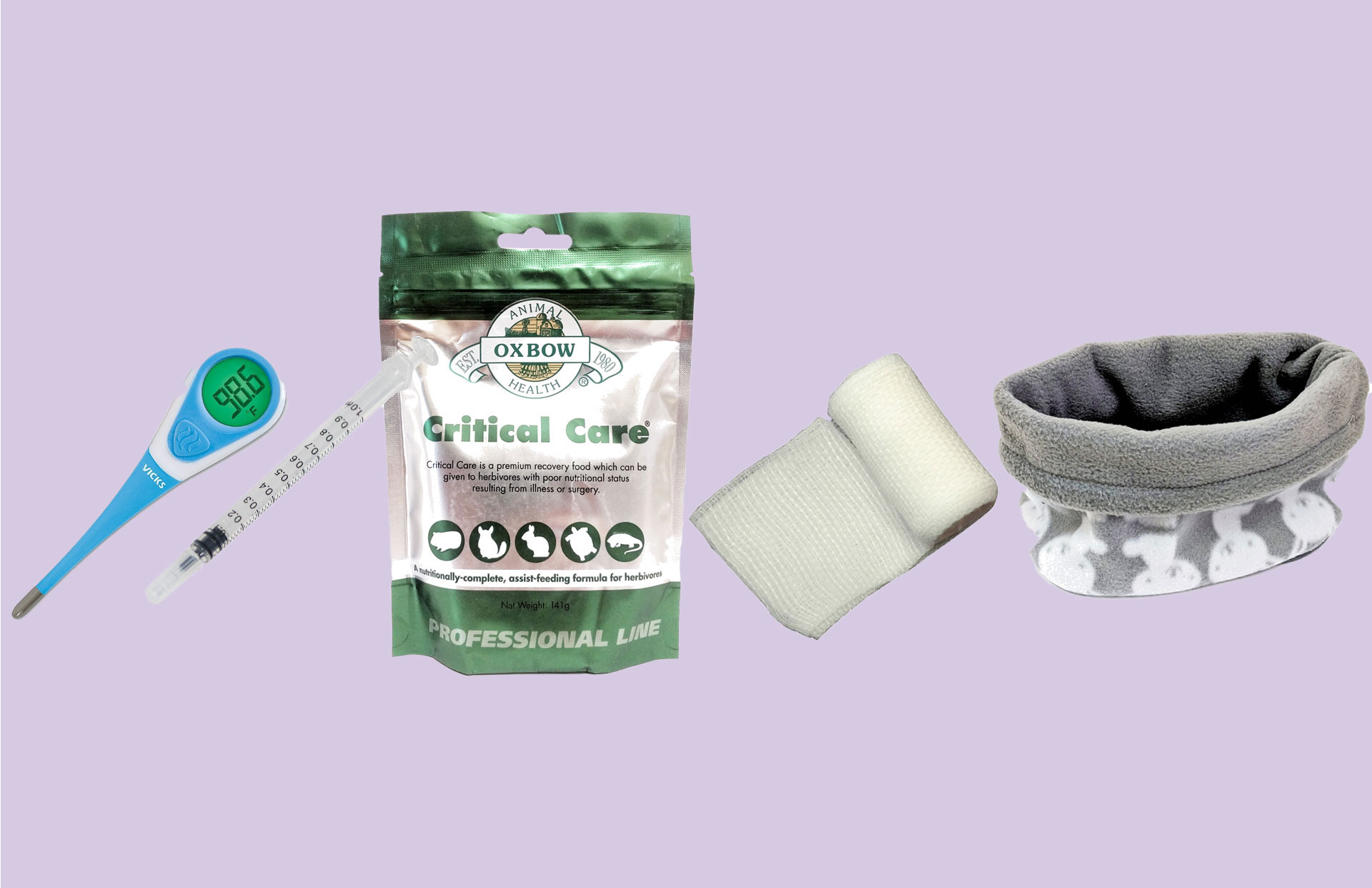“When in doubt, go to the vet” is a bunny parent’s mantra. There’s no substitute for seeing a rabbit-savvy veterinarian* and getting your rabbit the professional instruction and care they need, especially in an emergency.
However, due to COVID-19 protocols, staffing shortages, and other challenges at veterinary offices**, it may be difficult right now to get an immediate appointment with your vet, or even get to an emergency vet. It’s a good idea to have a first aid kit with emergency supplies on hand in case your rabbit isn’t able to see a vet right away.
Remember, a first aid kit is not a replacement for going to a rabbit-savvy veterinarian when there is an emergency. A first aid kit can help you keep your rabbit stable until they can see a vet.
When putting together your emergency kit, we recommend including:
- Digital thermometer (a rabbit’s normal temperature is 101-103°F) – Practice taking your rabbit’s temperature before it’s an emergency!***
- Water-based lubricant, like KY Jelly, to lubricate the thermometer
- Heating pad or disc, and cooling pad/ice packs, to keep your rabbit warm/cool if needed. Only heat/cool a rabbit after taking their temperature!
- Stethoscope, to listen for gut sounds
- Blanket or cuddle pod to safely secure your rabbit for syringe feeding and/or medications
- Recovery food, like Oxbow’s Critical Care, for syringe feeding if your rabbit stops eating
- Canned pumpkin (not pie filling) to mix with Critical Care, if needed, for extra fiber and taste
- Infant gas drops (simethicone) – While simethicone may not do anything if a rabbit has gas, it’s unlikely to hurt, and anecdotally some people feel it helps their rabbit; however, do not wait to seek veterinary attention.
- Oral syringes (1mL syringes for medicine and 35 mL catheter tip syringes for feeding)
- Pedialyte (unflavored), or apple juice for hydration
- Hydrogen peroxide, to clean blood off fur or check for blood in urine, seeing if it fizzes
- Pet-safe wound care spray, like Vetericyn
- Neosporin or Polysporin for minor cuts and bite wounds (not the kind with “pain relief,” generic OK)
- Q-tips and cotton balls
- Gauze and self-adherent bandages, like VetWrap or CoFlex
- Tweezers to remove debris
- Blunt scissors to safely trim fur away from a wound or mats (we like children’s Fiskars safety scissors)
- Small flashlight to look in ears, eyes, examine wounds, and to backlight dark nails for nail trims
- Styptic powder or cornstarch to stop bleeding if a nail is cut too close to the quick
- Saline solution or veterinary eyewash to flush eyes
- Washcloth to do a warm compress for a weepy eye or abscess
- Bulb syringe to clear mucus out of nostril or administer an enema*****
- Rubbing alcohol (isopropyl) to clean thermometer after use, or to apply to ears of an overheating rabbit (temp over 104)
Reviewed by HRS staff
Author: Larissa ChurchJournal Issue: House Rabbit Journal, Winter 2020




